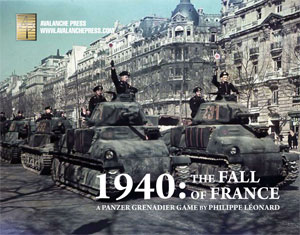| Awesome
Improvisation:
The German Bufla
By Philippe Leonard
December 2019
 When the Second World War broke out in
the fall of 1939, most armies had issued
anti-tank guns to stop enemy armor. The 37mm
bore became standard for most armies, with
Britain picking a 40mm size for its 2-pounder
gun. This could penetrate the armor of most
tanks of the day, but it could not dent the
armored turrets of fixed fortifications. When the Second World War broke out in
the fall of 1939, most armies had issued
anti-tank guns to stop enemy armor. The 37mm
bore became standard for most armies, with
Britain picking a 40mm size for its 2-pounder
gun. This could penetrate the armor of most
tanks of the day, but it could not dent the
armored turrets of fixed fortifications.
Facing the prospect of an assault on modern
Czech fortifications with tough bunkers and
armored gun positions, in the spring of 1938
the German Army asked for a mobile version
of Rheinmetall's powerful 88mm anti-aircraft
gun. The first prototype submitted was simply
a flak gun with a more mobile wheeled chassis
and splinter shield, towed by a prime mover.
The Army Weapons Office disliked this as
it exposed the crew to enemy fire while the
gun was placed in firing position, and asked
for a weapon mounted directly on its prime
mover.
 The
result had the ungainly title of "8.8
cm Flak 18 (SFL) auf Zukraftwagen 12t (Sd.Kfz
8)," more commonly known as Bunkerflak
or Bufla for short. The 88mm gun was mounted
on a lightly-armored halftrack, with a splinter
shield to protect the gun crew. The prototype
went to the Kummersdorf proving ground, where
its new armor-piercing rounds greatly exceeded
expectations. The range masters even set
up a firing test against a tank (they type
is unrecorded); it easily destroyed tanks
at long range but a Luftwaffe observer sniffed
that the guns were unlikely to ever be used
against enemy armor and "are much more
likely to engage aircraft." The
result had the ungainly title of "8.8
cm Flak 18 (SFL) auf Zukraftwagen 12t (Sd.Kfz
8)," more commonly known as Bunkerflak
or Bufla for short. The 88mm gun was mounted
on a lightly-armored halftrack, with a splinter
shield to protect the gun crew. The prototype
went to the Kummersdorf proving ground, where
its new armor-piercing rounds greatly exceeded
expectations. The range masters even set
up a firing test against a tank (they type
is unrecorded); it easily destroyed tanks
at long range but a Luftwaffe observer sniffed
that the guns were unlikely to ever be used
against enemy armor and "are much more
likely to engage aircraft."
At the time, German intelligence believed
the thickest armor carried by a potential
enemy tank was the 40mm of a Renault R35;
the much thicker protection of the Char B1
or British Matilda II would come as a great
shock in 1940 (as would that of the T-34
a year later, a damning indictment of German "efficiency").
The Bufla would fight enemy fortifications,
and 10 of them were delivered after Daimler-Benz
heavily modified the chassis to absorb the
massive shock of the weapon's recoil.
Czechoslovakia fell without a shot being
fired, and the Bufla went to war in September
1939 with the 1st Company of the 8th Heavy
Tank Destroyer Detachment. "The mobility
of our machines allows real tactical flexibility," reported
the company commander, Capt. Frenzel. "We
can change position after two or three shots.
Among other things, this allowed us to avoid
losses in Poland, as enemy artillery had
no time to adjust their fire against us."
Reorganized in February 1940, the company
kept six machines and put four worn vehicles
into reserve — despite the modifications,
it appears that repeated firing did indeed
damage the machines. During the 1940 campaign
the company was attached to the 1st Panzer
Division, seeing action against French bunkers
at Sedan.
Across the Meuse, a pair of Bufla were ready
when the French 3rd DCR's FCM 36 tanks spearheaded
a counter-attack. The big guns devastated
the attacking tanks, and the survivors reported
that they had met the fire of 100mm guns.
Charles DeGaulle's 4th DCR met the big guns
again at Montcornet and at Chambry, where
even the seemingly invulnerable Char B1 bis
exploded at the first shot and the houses
of Chambry provided no cover for the French
armored infantry, the Chasseuers Portees.
Two Bufla were lost in these battles, replaced
by vehicles from the reserve.
After the French campaign, the company was
attached to XXXIX Panzer Corps for the attack
on the Soviet Union. The Bufla could knock
out any Soviet tank, even the awesome T-34
and KV-1, and found itself in high demand.
Two more were lost by the end of the year,
but the reserve vehicles must not have been
operational because the company received
towe 50mm guns as replacements and was re-designated
as the independent 601st Tank Destroyer Company.
By late summer only two of the big vehicles
were still operational, and the company was
absorbed by the 559th Tank Destroyer Battalion.
The last Bufla was knocked out in March 1943.
The Bufla appears in several scenarios of 1940:
The Fall of France, and is a
devastating weapons against event he toughest
French tanks. Though there were only a few
of these guns in action, the Germans employed
them skillfully and managed to have them
present several times when the French struck
what should have been an exposed and vulnerable
flank.
Order 1940: The Fall of France right now.
Sign up for our newsletter right here. Your info will never be sold or transferred; we'll just use it to update you on new games and new offers.
|
